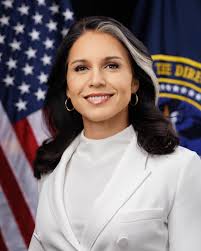Understanding Tulsi Gabbard’s Political Journey and Influence

Introduction
Tulsi Gabbard, a former Congresswoman from Hawaii, has been a prominent figure in U.S. politics, known for her unique positions and outspoken views. Since her time in Congress, she has carved out a niche as a controversial yet respected voice. Her recent actions and commentary on national and international issues continue to spark interest, making her a significant figure to watch in the evolving political landscape.
Political Background
Gabbard served in the U.S. House of Representatives from 2013 to 2021, representing Hawaii’s 2nd congressional district. As a member of the Democratic Party, she gained national attention for her staunch anti-war stance, progressive policies on healthcare, and climate change advocacy. In 2020, she ran for the Democratic presidential nomination, positioning herself as a candidate challenging the political status quo. Despite not securing the nomination, her campaign raised awareness of various critical issues, including foreign policy and veterans’ rights.
Recent Developments
In recent months, Gabbard has announced her departure from the Democratic Party, claiming it has become a party of division and intolerance. This major shift signals a potential realignment in her political identity, aligning more with libertarian and independent values. Many analysts view this move as a strategic effort to reach a broader audience, particularly among disillusioned voters on both sides of the aisle. Gabbard has been vocal about her opposition to what she sees as government overreach regarding COVID-19 policies and has emphasized her commitment to protecting civil liberties.
Public Reactions and Implications
The response to Gabbard’s departure from the Democratic Party has been mixed. Supporters applaud her bravery in standing up for her beliefs, while critics argue that her decision reflects a shift towards divisive politics. Gabbard’s subsequent appearances on various media platforms have ignited discussions about the future of U.S. politics, especially concerning independent candidates. Her recent trajectory may encourage other political figures to explore alternative memberships or platforms that resonate with their values.
Conclusion
Tulsi Gabbard’s journey through the political arena illustrates the complexities of American politics today. Her evolving stance, moving away from traditional party lines, puts forth a relevant narrative about the changing Democratic Party and the growing independence movement. For readers, Gabbard’s actions serve as a case study on political realignment and the increasing need for diverse voices in governance. As she continues to engage with the public and media, it will be crucial for voters to follow her decisions and influence in shaping future political dialogues.









